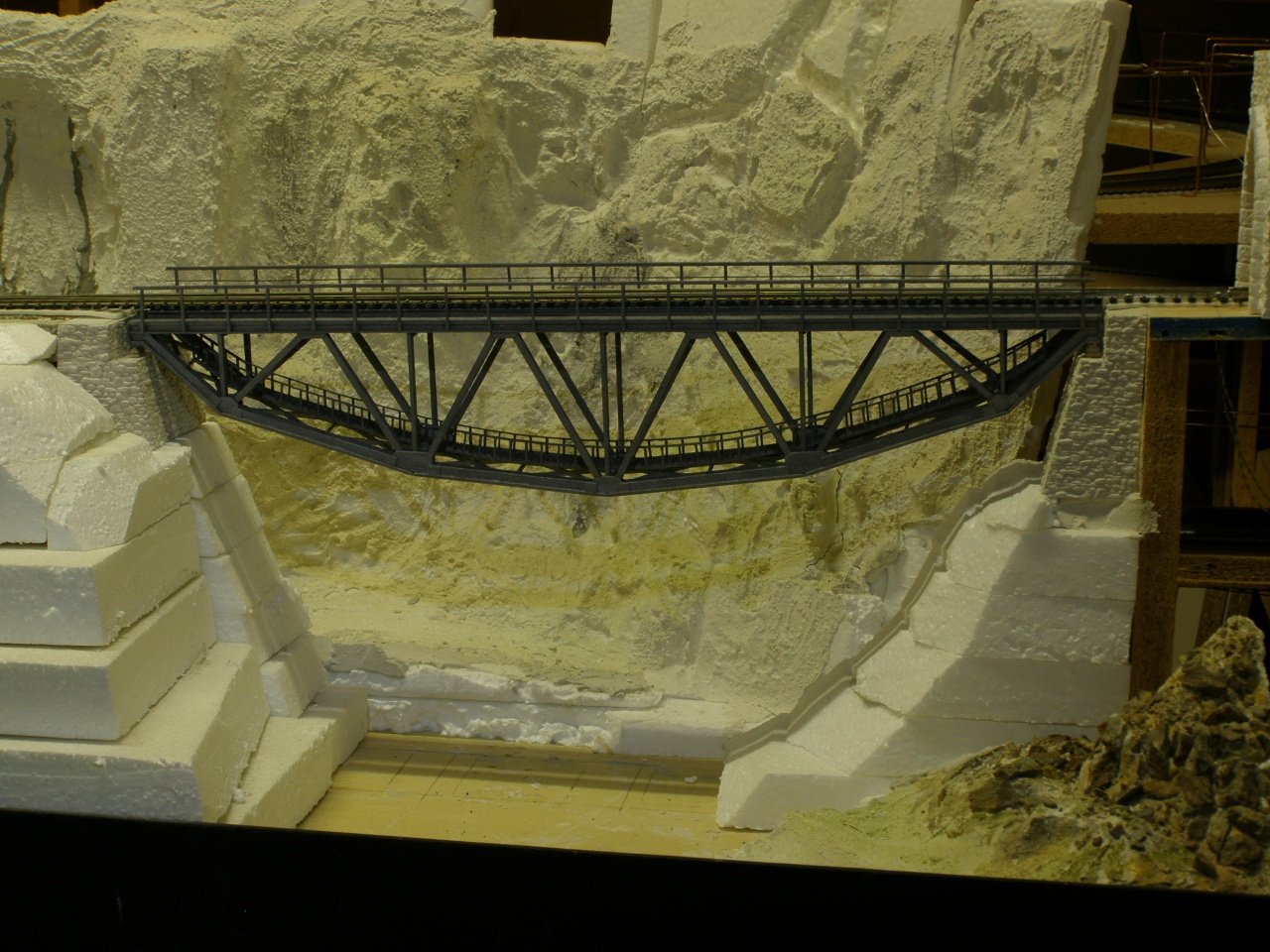My gap.
The bank on each side of the narrow part, made of blocks of
Styrofoam, have been glued together with quick drying plaster. Then
you are done in a few minutes. You can also do it with white wood
glue but that sets very slowly. The Styrofoam doesn't have a flat
surface so you can't squeeze the glue out to a slim layer.
Click on the photo for an enlargement in a new window.



















